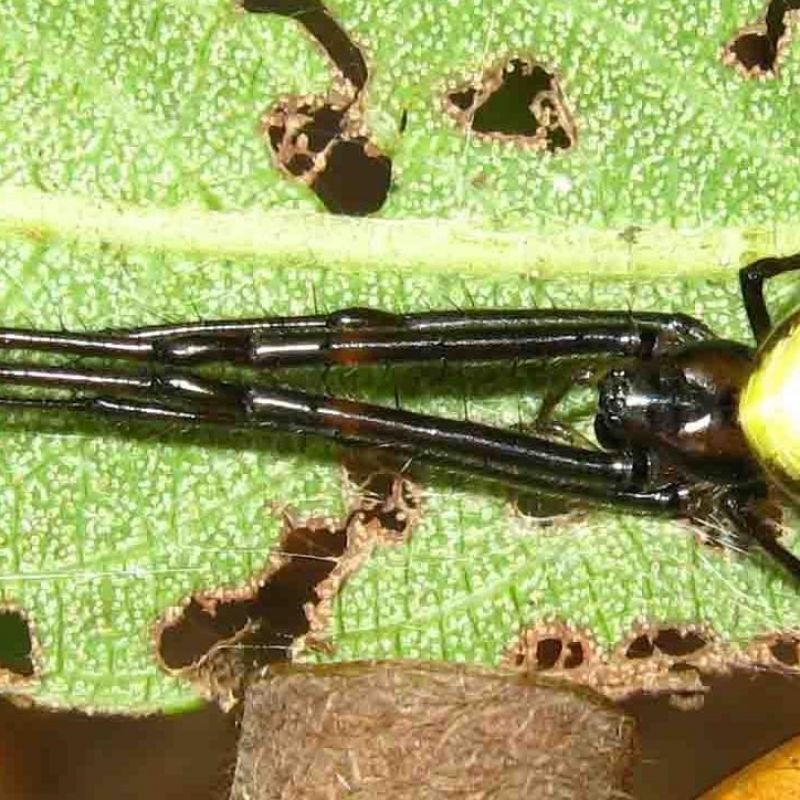Spiders are one of the most diverse groups of invertebrates. These eight-legged creatures are found almost all over the world. However, despite their wide presence, spiders are commonly mistaken for insects. Spiders belong to a class called Arachnida (order: Araneae) which includes other groups like scorpions, schizomids, tailless whip-scorpions, wind-scorpions, pseudo-spiders, ticks, mites and opiliones. Spiders can be distinguished from other arachnids
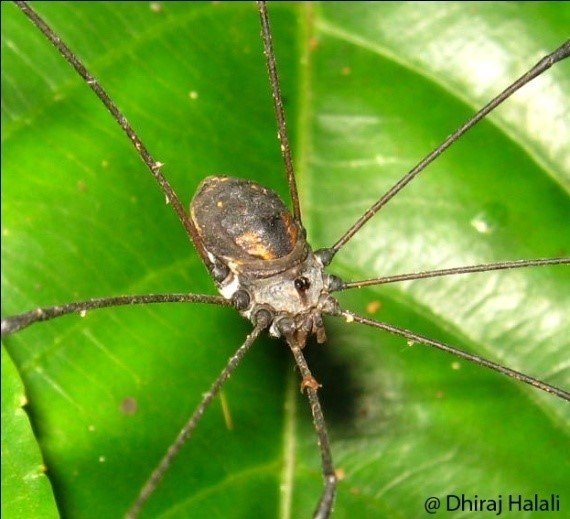
The Western Ghats is a biodiversity hotspot harboring immense diversity of flora and fauna. The eastern stretch of the Western Ghats has wildlife sanctuaries and national parks which are protected by law. The state of Goa is located between the Arabian Sea and the Western Ghats. Pioneering work in documenting spider diversity in Goa was carried out by Dr. Manoj Borkar with his team of students in the years 1998 to 2000. The study was carried out at Mollem National Park, Bhagwan Mahavir Wildlife Sanctuary and Khotigao Wildlife Sanctuary wherein
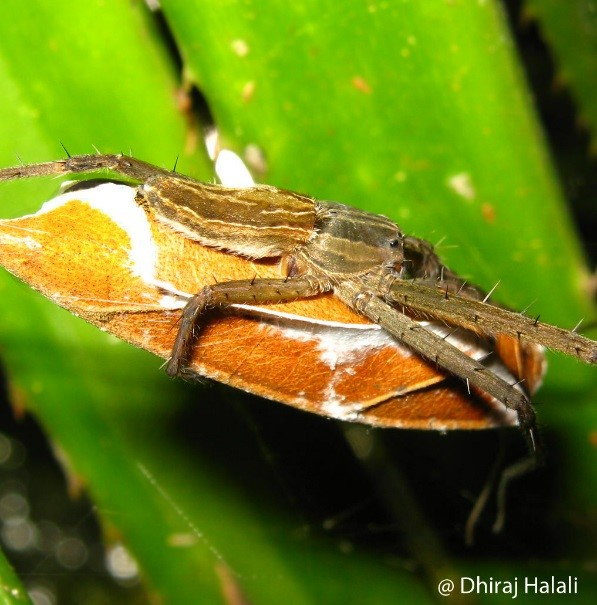
Various short-term studies have highlighted the urgent need for documentation and study of spiders. In the few surveys conducted at Bhagwan Mahavir Wildlife Sanctuary and Netravali Wildlife Sanctuary and several other places for documentation of diversity, 40 species and four families were recorded for the first time in Goa (unpublished data). During a few visits to forest streams and some water puddles in Sanguem, the presence of Tylorida striata was discovered and as a consequence, they were added as new record in 2015. According to studies carried out by the Zoological Survey of India only two species were recorded from the Salticidae family. However, based on a current study, 14 species have been identified in this group. The Pisauridae family, which was hitherto unrecorded, was recorded by the current study and was found to be represented by four genera: Dolomedes, Hygropoda, Dendrolycosa and Nilus. Dolomedes sp. and Hygropoda sp. are found actively hunting around forest streams. All these new records are based on a few opportunistic sightings and surveys, hence one can only imagine the number of species which are yet to be discovered in the Goan forests.
As mentioned earlier, spiders have the unique ability to produce silk which they use to carry out many functions. This silk is produced with the help of the spider’s spinning glands. Although different types of spinning gland produce different types of silk, all these are composed of proteins of a type known as fibroins. Silk is produced in a water soluble liquid form inside the body of the spider but interestingly, this converts to highly elastic, insoluble solid silk thread with exposure to air. This transition from water soluble to insoluble has still not been completely understood.
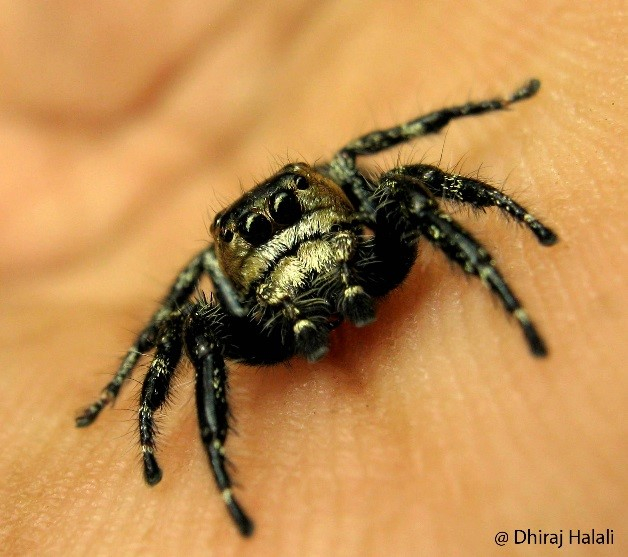
Spiders use this silk in almost all of their daily activities. The silk is used for foraging, spinning egg sacs and retreats and even in dispersal (ballooning). For foraging, certain spiders build webs for capturing prey. Web-building spiders are predators of the ‘sit and wait’ type, which means that they wait for prey to become entangled in their webs. Once the prey is entangled, the spider wraps it with more silk and injects its venom into its body. The venom slowly breaks down the body of the prey into a soupy consistency, which is then sucked up by the spider. The design of these webs vary from one species to another. They are dependent upon many characters such as the length of the legs, spatial constraints, climatic factors, body size, prey availability, prey capture rates, egg production and previous experiences. Studies carried out on Parawixia bistriata showed that it constructed either small webs with low mesh height which mostly trapped small dipterans or large webs with high mesh height for trapping larger insects.
Silk has many more interesting uses. In genus Lycosa (wolf spider), the male detects the scent of the silk which is left as a drag line by the female to approach her for copulation. Jumping spiders (family Salticidae), which are able to leap from one surface to another, attach a line of silk which helps them climb back in case they are unable to make it to the other surface.
Apart from an immense diversity, spiders also exhibit a variety of interesting characteristics. The female spiders of genus Lycosa, which are found in abundance in the leaf litter along the banks of
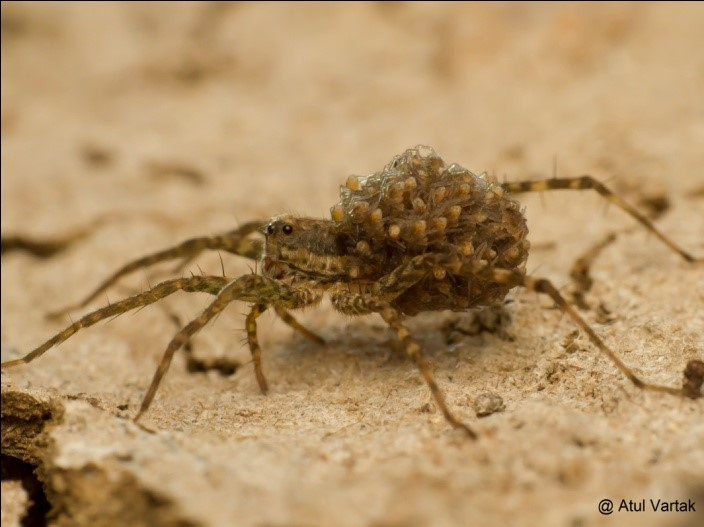
Interesting behaviour is also displayed by the species belonging to the Hamadruas genus which has recently been described by Christa L. Deeleman-Reinhold (2009). They do not spin webs for
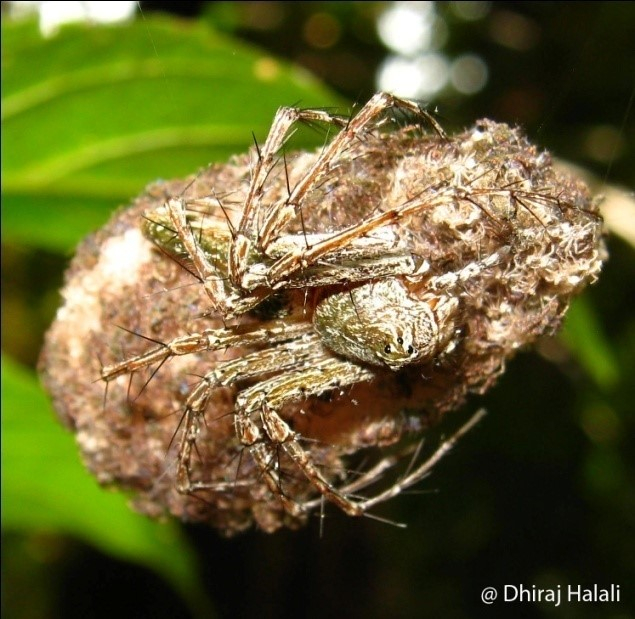
Natural selection has resulted in the evolution of several tactics that enable the survival of the fittest. Mimicry is one such phenomenon in which one species mimics another species called ‘model’ for reasons that include avoidance of predation pressure, sexual cannibalism, etc. Mimicry is known to occur in the case of butterflies where a prey mimics other less-preferred butterflies in order to
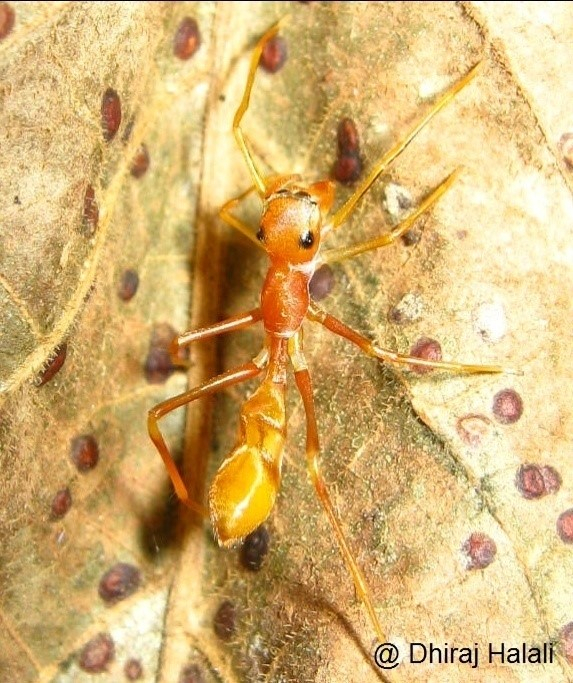
Spiders play an important role in the food chain and are also crucial to the ecosystem. For example, in agricultural areas, they feed on pests. Several studies have shown that spiders can also be used as bio-indicators to help monitor the health of the environment. Furthermore, spiders are ideal organisms for the study of many behavioral and evolutionary phenomena.
In terms of the Indian scenario, studies on arachnids are still at a very early stage. As yet, there is no proper count of the number of species that exist in India. In addition to this, there are very few studies available on their ecology, behaviour, distribution and natural history. Recent studies have been in the form of regional checklists and new species description. There is an urgent need of conducting

References
Deeleman-Reinhold, Christa L. 2009. ‘Description of the lynx spiders of a canopy fogging project in northern Borneo (Araneae: Oxyopidae), with description of a new genus and six new species of Hamataliwa’. Zool. Med. Leiden 83.17, 9.vii.2009:673–700. Online at http://repository.naturalis.nl/document/141976 (viewed on April 15, 2016).
Foelix, Rainer. 2011[1979]. Biology of Spiders. New York: Oxford University Press.
